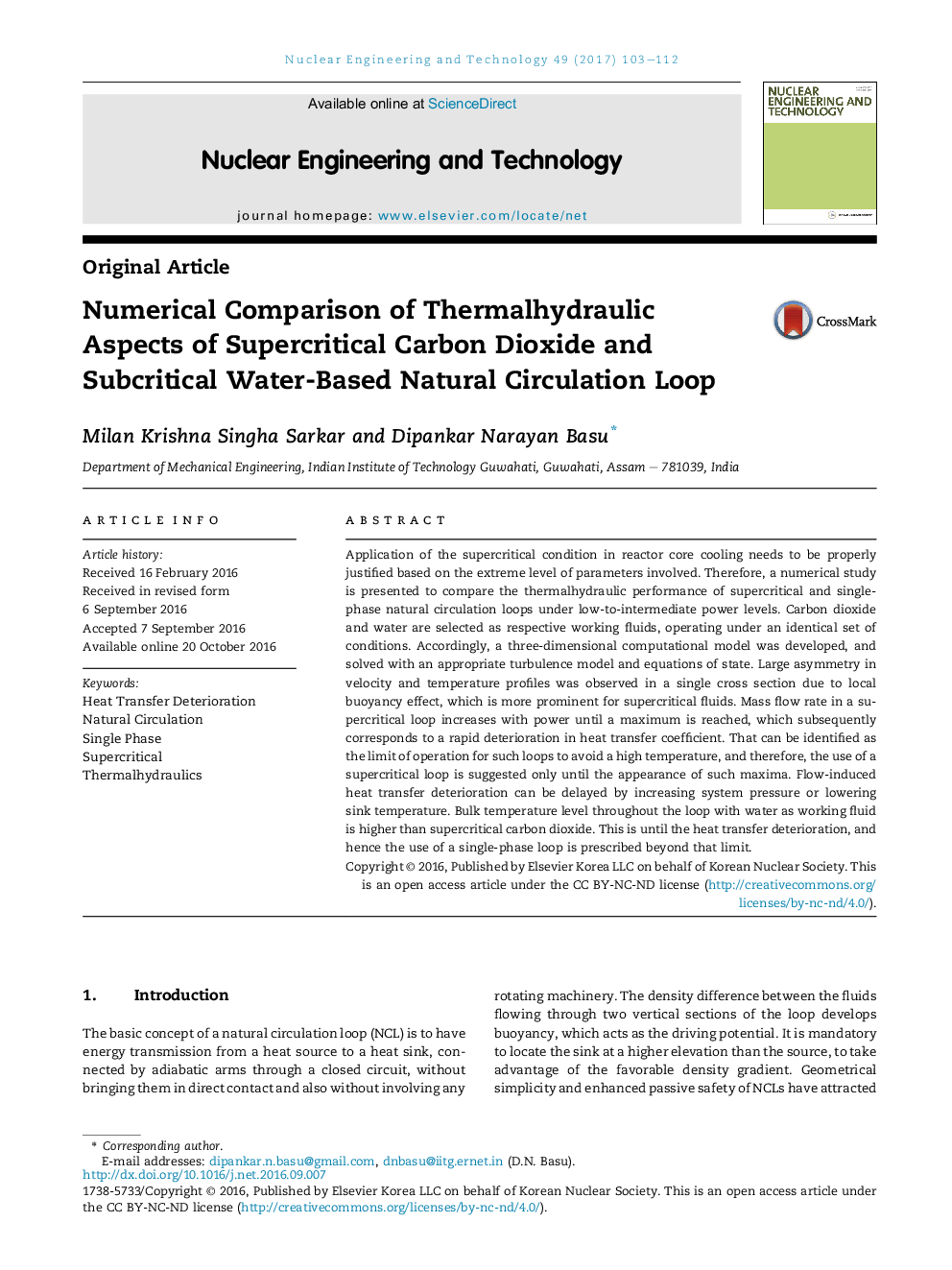| Article ID | Journal | Published Year | Pages | File Type |
|---|---|---|---|---|
| 5478124 | Nuclear Engineering and Technology | 2017 | 10 Pages |
Application of the supercritical condition in reactor core cooling needs to be properly justified based on the extreme level of parameters involved. Therefore, a numerical study is presented to compare the thermalhydraulic performance of supercritical and single-phase natural circulation loops under low-to-intermediate power levels. Carbon dioxide and water are selected as respective working fluids, operating under an identical set of conditions. Accordingly, a three-dimensional computational model was developed, and solved with an appropriate turbulence model and equations of state. Large asymmetry in velocity and temperature profiles was observed in a single cross section due to local buoyancy effect, which is more prominent for supercritical fluids. Mass flow rate in a supercritical loop increases with power until a maximum is reached, which subsequently corresponds to a rapid deterioration in heat transfer coefficient. That can be identified as the limit of operation for such loops to avoid a high temperature, and therefore, the use of a supercritical loop is suggested only until the appearance of such maxima. Flow-induced heat transfer deterioration can be delayed by increasing system pressure or lowering sink temperature. Bulk temperature level throughout the loop with water as working fluid is higher than supercritical carbon dioxide. This is until the heat transfer deterioration, and hence the use of a single-phase loop is prescribed beyond that limit.
